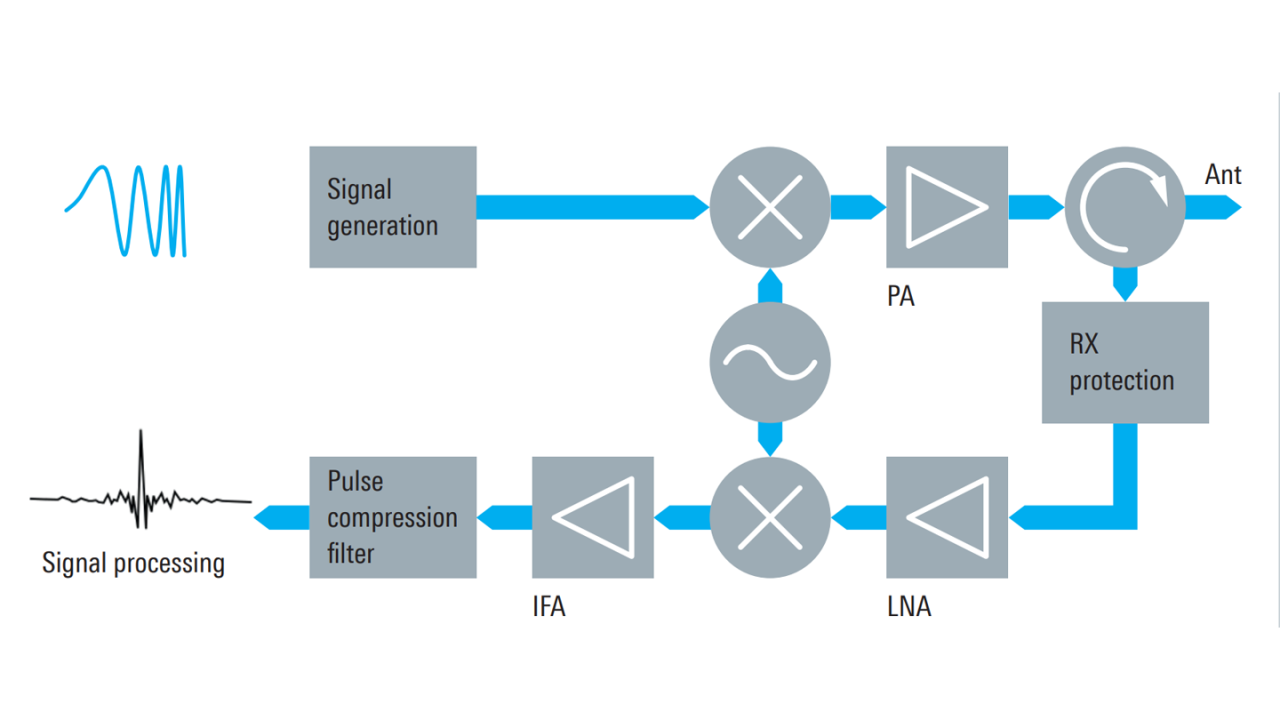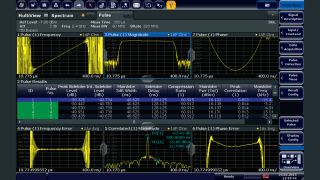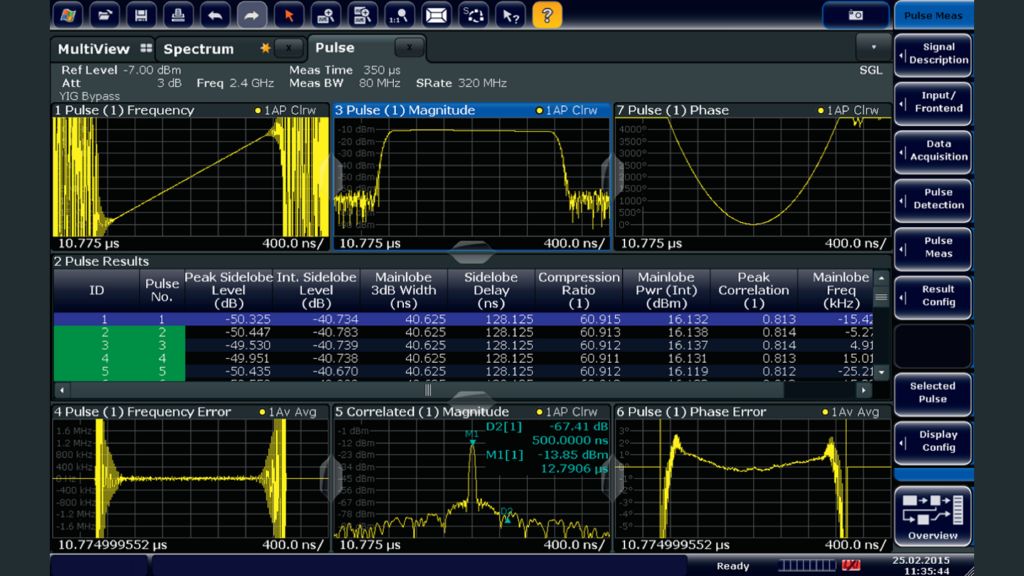Rohde & Schwarz solution
The R&S®FSW signal and spectrum analyzer equipped with the R&S®FSW-K6 pulse measurement and R&S®FSW K6S time sidelobe measurement options effectively analyzes pulse parameters and additionally pulse compression. This solution allows radar design engineers to verify and optimize their radar signals, signal processing and components using automated, reproducible measurements. In addition, signal disturbances such as intentional echo signal distortion can also be verified in a straightforward manner. For the test setup, the radar transmitter is connected to the RF input of the R&S®FSW. An ideal waveform in digital I/Q (iq-tar) format is loaded into the analyzer, which operates as a pulse compression filter. The ideal waveform can be synthetically generated or previously recorded with the R&S®FSW.
The actual measured radar pulse waveform is cross-correlated with the ideal I/Q waveform. In the case of an ideal measured pulse, the two waveforms will be identical, exhibiting the same narrow mainlobe curve. In practice, however, the waveforms will differ, e.g. due to I/Q modulator inaccuracies, phase noise and VSWR between stages. The more the waveforms differ, the less effective is the compression ratio, and time sidelobes may increase, causing radar system performance to degrade.
The differences between measured and ideal waveforms result in sidelobes in addition to the mainlobe. The crosscorrelation function is clearly visualized by the correlated magnitude graph displayed on the R&S®FSW, allowing efficient evaluation.
The main pulse parameters, including mainlobe width, sidelobe suppression, sidelobe delay, main and sidelobe integrated power, peak correlation and mainlobe frequency and phase, are also automatically measured and displayed.
The R&S®FSW with pulse and time sidelobe measurement options allows radar system designers and engineers to efficiently optimize, verify and test their pulse compression radar waveforms, components and the entire system to achieve superior radar performance.









